Use filters in the gallery view
-
Inside a model run, go to the gallery view by clicking the gallery icon in the top right.
- Optionally, click on Splits and select the Validation or Test split. Some machine learning teams prefer doing error analysis on the validation or test splits only, rather than on all the training data.
- Filter the data rows to keep only disagreements between model predictions and ground truth annotations. To do so, you can add a Metrics filter to keep only data rows with low metrics (IOU between 0 and 0.5 in the example below). In the image model example below, you can see that 307 data rows matching these filters are surfaced.
-
You then have a couple of options for the next step:
- Surface data rows where the disagreement is the highest. To do so, you can sort data rows by increasing metrics (IOU in the example). Predictions that have the lowest metrics are likely to be model errors.
- Surface data rows where the model is least confident. To do so, you can sort data rows by increasing order of confidence. This assumes you have uploaded model confidence as a scalar metric to the model run. Predictions that have low metrics (IOU) and low model confidence are likely to be edge cases on which the model is struggling.
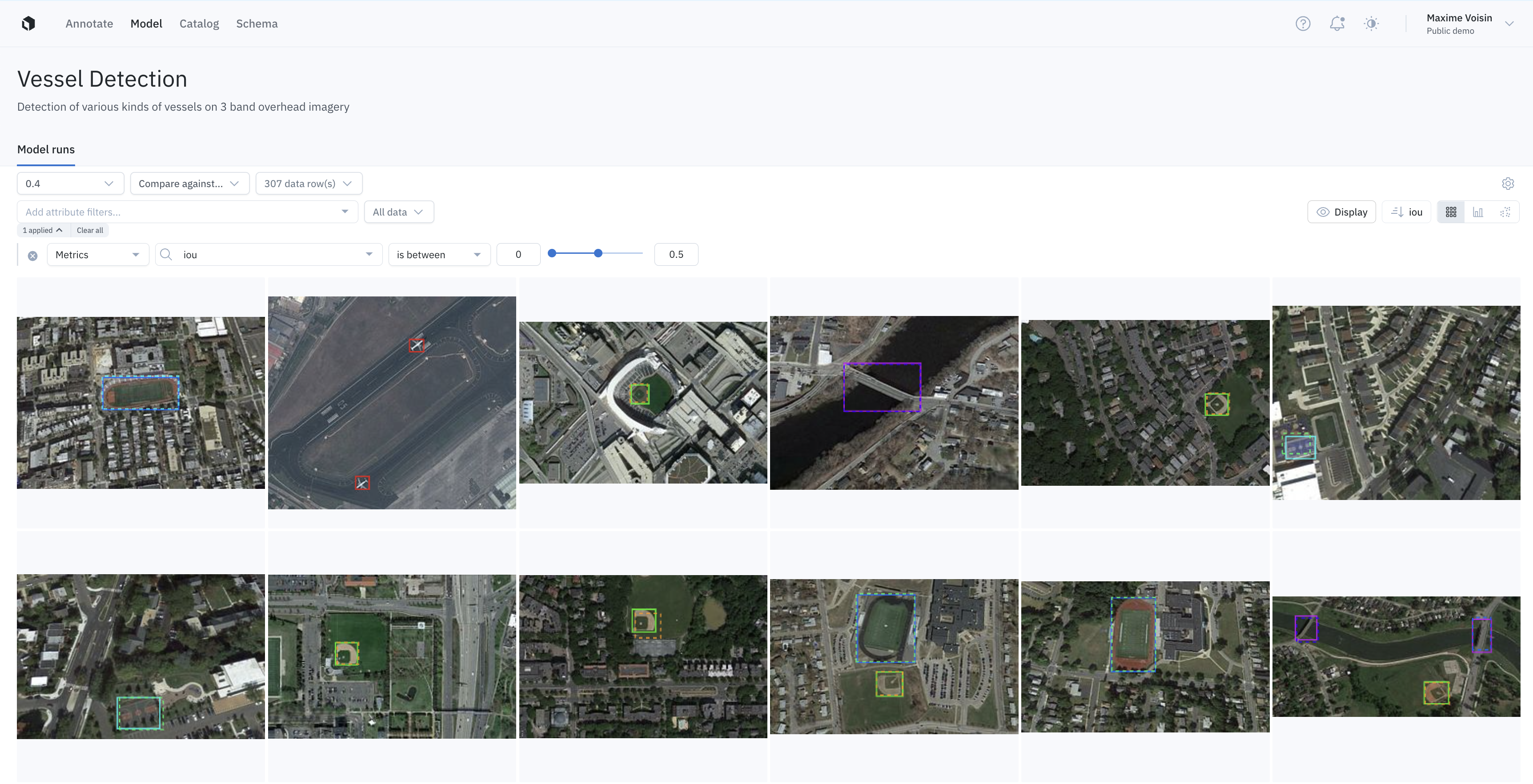
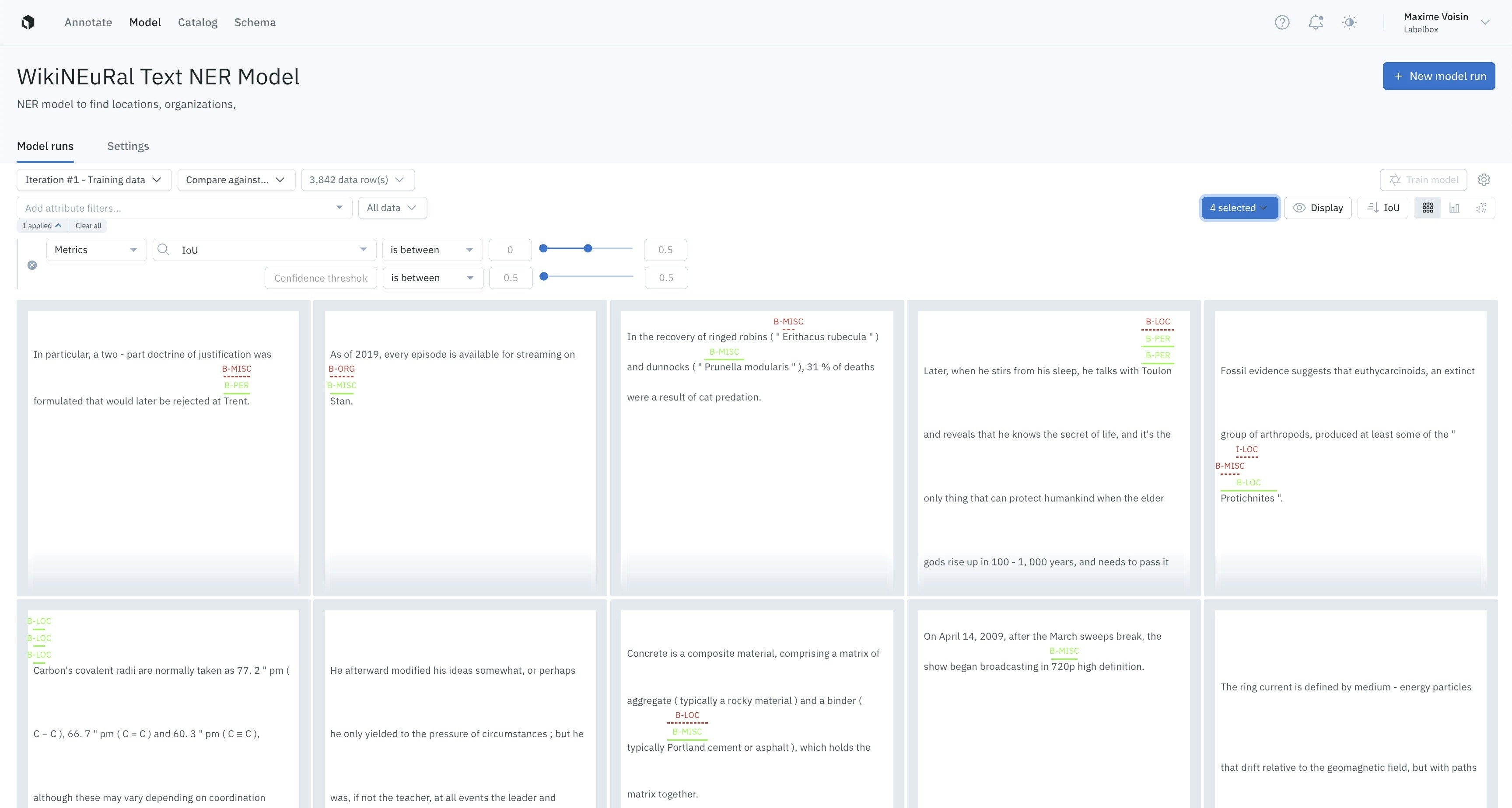
Filter and sort to keep the largest disagreements between model predictions and ground truth annotations.
- Then, manually inspect in detail some of these surfaced data rows. The goal is to find patterns of edge cases on which the model is struggling. It is common practice to manually inspect hundreds of data rows to find these patterns. To do so, click on a thumbnail to open the detailed view. For the best error analysis experience, change the display setting to Color by feature. This way, you can easily visualize where predictions and labels disagree.
basketball_court instead of a ground_track_field. You found a pattern of model failures that can be described as follows: “The model seems to struggle to distinguish ground track fields and basketball courts, especially when they have green and brown colors”.

The detail view helps you inspect disagreements. The goal is to find patterns of model failures.
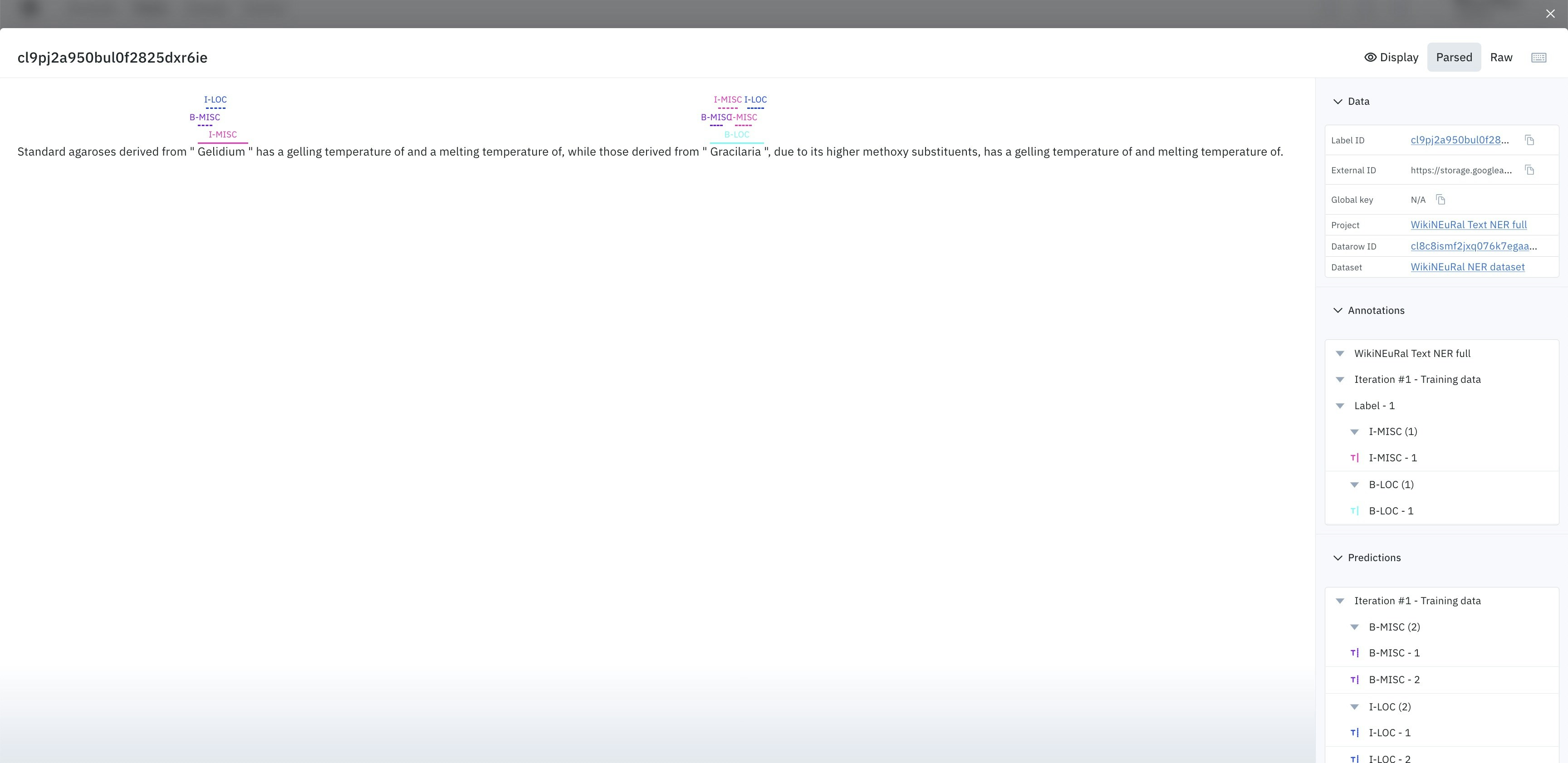
The detail view helps you inspect disagreements. The goal is to find patterns of model failures.
- Double-check that you have found a pattern of model failure. For example, in the image example, we filter to keep only data rows that contain a
basketball_courtannotation or aground_track_fieldannotation and have low IOU. This surfaces many examples of the exact edge case we discovered above: “The model struggles to distinguish ground track fields and basketball courts, especially when they have green and brown colors”.

Many ground track fields and basketball courts are being mispredicted (low IOU). This is a pattern of model failure.
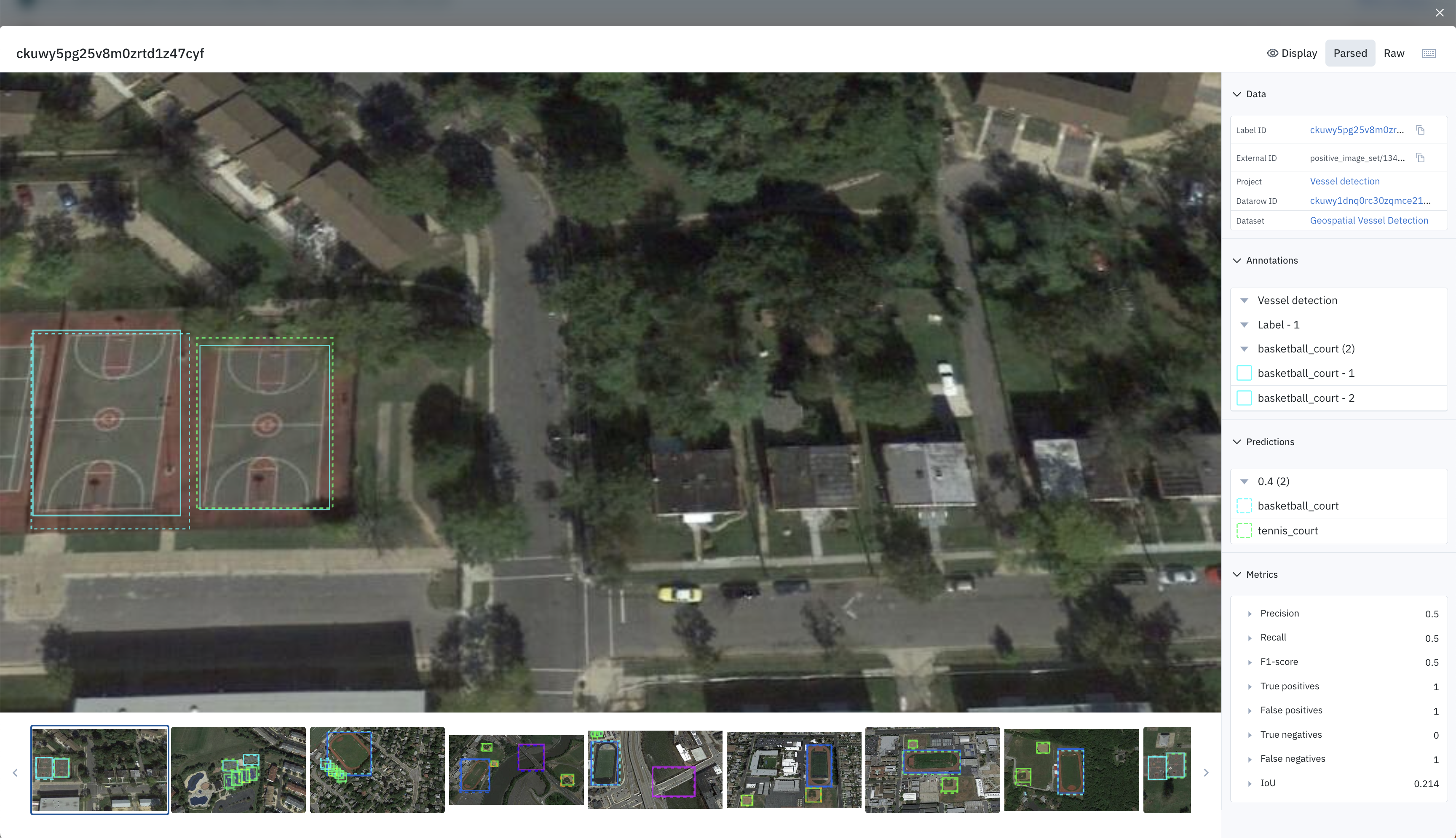
Labelbox helps you find patterns of model failures. In this case, the model struggles to distinguish ground track fields and basketball courts, especially when they have green and brown colors.
miscellaneous annotation and that have low IOU. This surfaces many examples of the exact edge case we discovered above: “The model struggles to make accurate NER predictions on scientific concepts”.
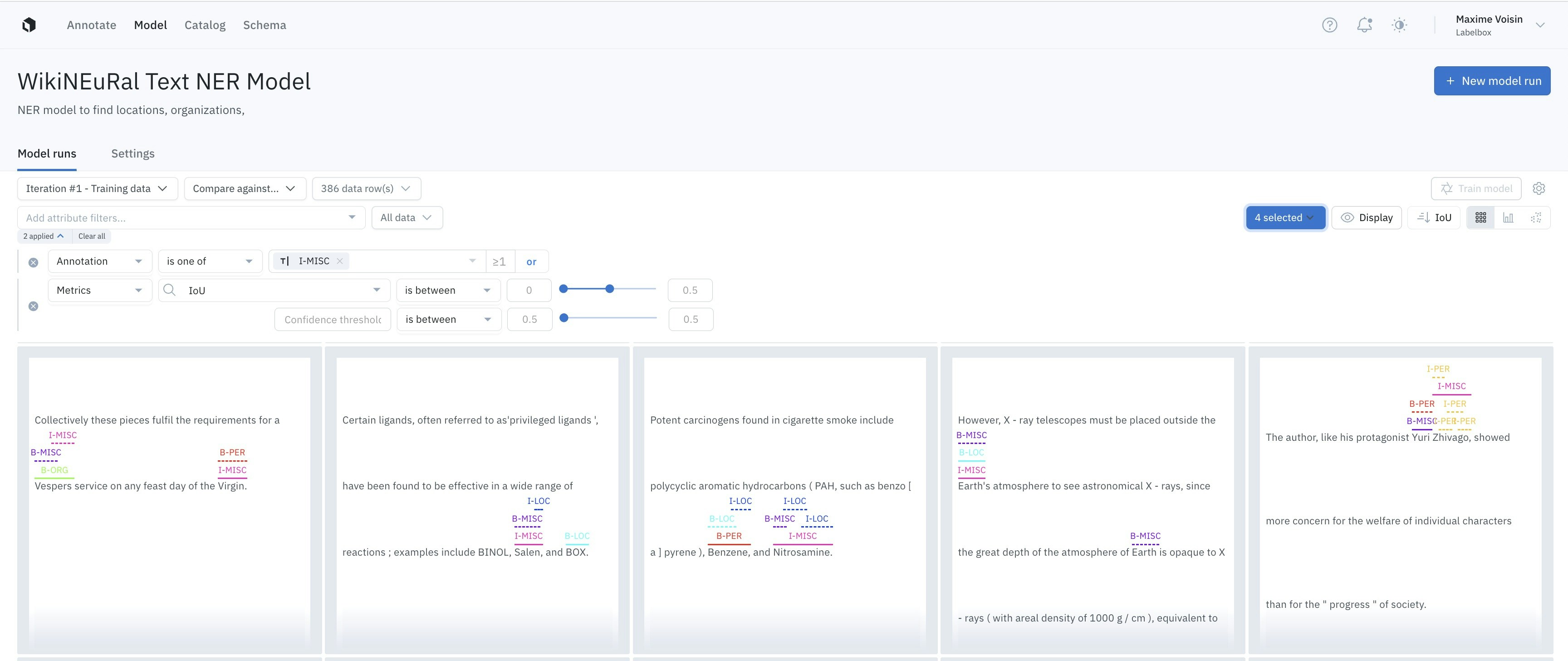
Labelbox helps you find patterns of model failures. In this case, struggles to make accurate NER predictions on scientific concepts.
Use model metrics
The metrics view is a powerful tool for performing error analysis. By looking at the scalar metrics, you may notice that the model is struggling to detectbasketball_court ground truth annotations. Then, you can click on the histogram bar corresponding to basketball courts and the gallery view will open. with filtering and sorting activated to show data rows in the basketball_court bar of this histogram.
This is an alternative to steps 1-4 described above in the Use filters in the gallery view section.
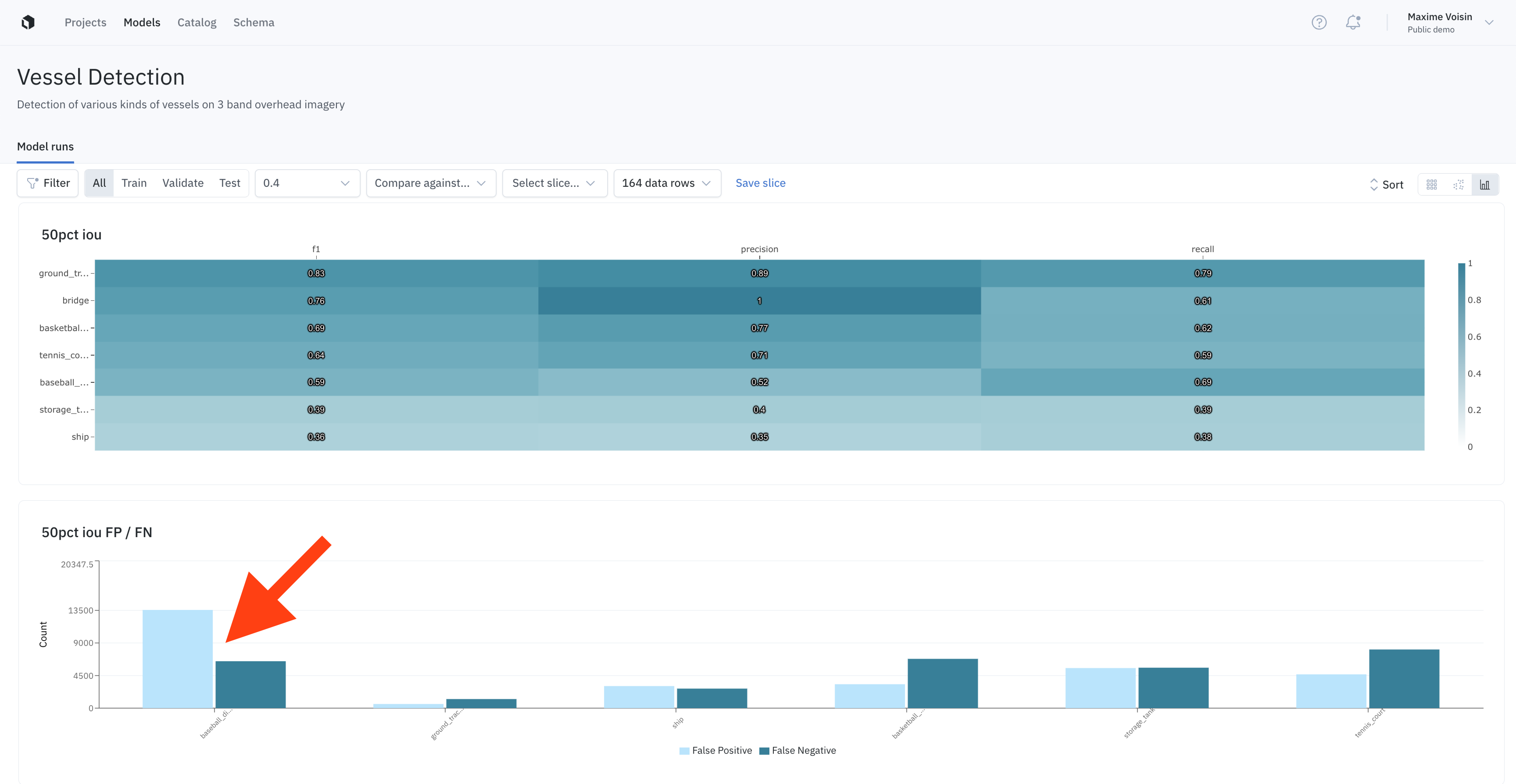
The metrics view is a good way to identify classes on which the model is struggling.
Use the projector view
The projector view is a powerful way to perform error analysis. In the image below you can see data rows containing aground_track_field annotation and those containing a basketball_court annotation overlap. The two classes are not easy to separate in the embedding space. This is an indicator that the model is likely to struggle with the data rows at the intersection of the two clusters.

Use the projector view to identify intersections of clusters where the model may be struggling.
basketball_court cluster and the ground_track_field cluster. Once the data rows are selected, you can switch back to the grid view, and inspect these data rows.
This is an alternative approach to steps 1-4 described above in the Use filters in the gallery view section.
Fix model errors
Once you find a pattern of model errors, you can take action to improve your model. Here is an example of a data-centric iteration to improve model performance:- Select data rows on which your model is struggling.
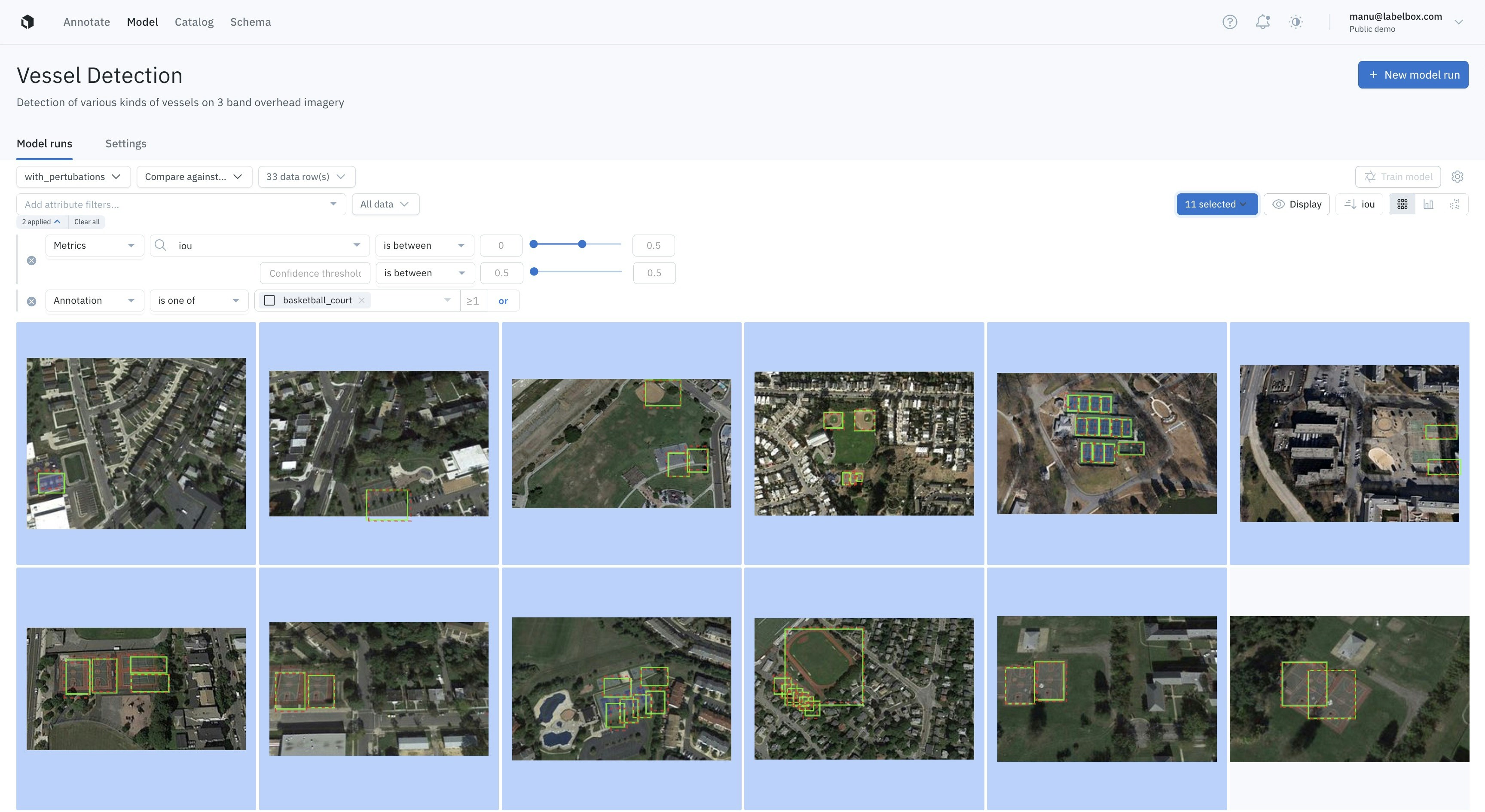
- Open the selected data rows in Catalog by clicking on [n] selected > View in Catalog. You will then be redirected to a filtered view of your Catalog showing only the previously selected data rows.
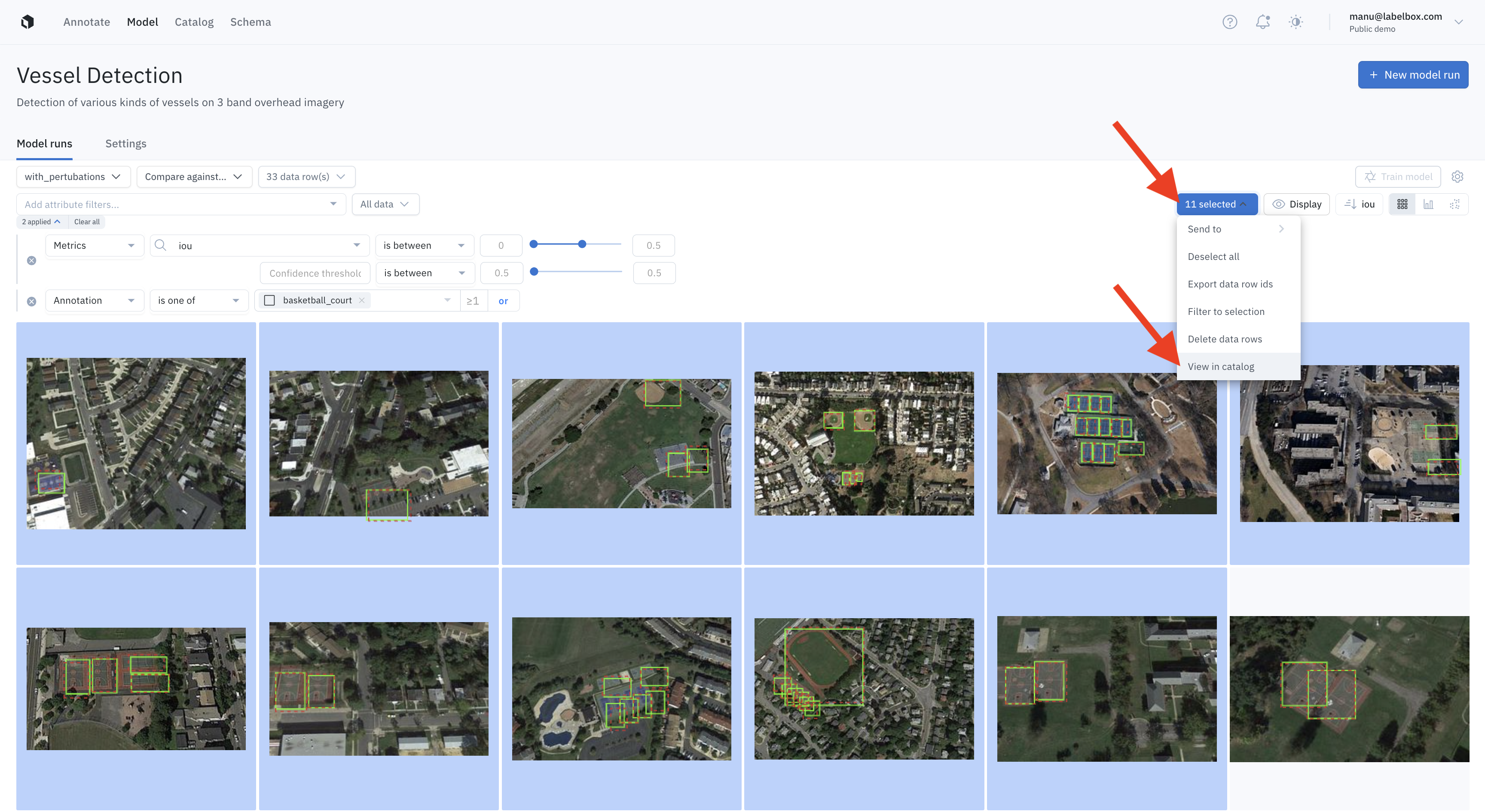
- Use similarity search to surface data similar to this pattern of model failures among all of the data in your Catalog. Optionally, you could create a slice that will automatically collect any similar data uploaded in the future.
- Next, you could filter on Annotation > is none to surface only unlabeled data rows. Labeling this high-impact data and then re-training your model is a powerful way to boost model performance.
- Create a batch and send it to a labeling project.